Hercules 3D Prophet 9600XT Review
Hercules 3D Prophet 9600XT
Hercules' take on the Radeon 9600XT is a little different from the crowd, but is it still the must have mid-range graphics solution?
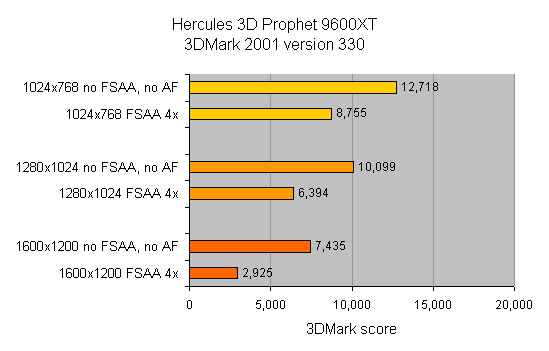
Verdict
Key Specifications
- Review Price: £129.00
The mid-range graphics market is one of the most hotly contested right now. Both ATi and nVidia are offering DirectX 9 cards that provide real gaming power at reasonable prices. I first looked at the Radeon 9600XT last December, and with its decent performance and attractive bundle it made a good impression. However, since then nVidia has hit back not once, but twice – first with the GeForce FX 5700 Ultra and then the GeForce FX 5900XT. Both of these stole the thunder from the Asus mid-range boards so I was interested to see if the Hercules mid-range ATi card would turn up any surprises.
The 3D Prophet line has a long heritage, stretching back to the original GeForce card released back in early 2000. Hercules has an even longer history in the graphics market so it’s no surprise that the 3D Prophet 9600XT is a pretty polished package.
The card it based on the standard ATi Radeon 9600XT. This has been manufactured using a 0.13 micron process with low-k dielectric technology enabling a high clock speed of 500MHz for the core GPU. The 128MB of DDR1 memory is rated at 325MHz, giving an effective clock of 650MHz, 50HZ faster than the standard 9600XT speeds. The rest of the architecture is a cut down version of the ATi Radeon 9800 Pro, featuring four rather than eight pixel pipelines and a 128bit memory architecture, versus a 256bit interface on its bigger and far more expensive brother. As we’ll see, this latter aspect of the design is the card’s Achilles heal.
As usual, there’s both DVI and D-SUB outputs so you can make use of multi-monitor support and there’s also a TV-Out. A cable is supplied with outputs for both S-Video and composite.
Hercules is something of a luxury brand so it was no surprise to see that this board was somewhat plusher than your average piece of silicon. It’s a fetching blue colour adorned with heatsinks on the memory, which in theory should help with overclocking.
Potential overclockers should note however that as the card doesn’t use an additional power connector it draws all its power from the AGP slot. As I discovered, this makes it sensitive to the AGP slot being overclocked. Therefore if you do want to up the front side bus on your motherboard, you’ll need to use a board that enables you to lock the clock speed of the AGP and PCI buses, otherwise you’ll be limited in your system overclocking ambitions.
The other neat feature of the card is its fan even though it’s not as quiet as the one on the MSi GeForceFX 5700TD Ultra. It does however sport a glowing blue LED. Now don’t get me wrong, I’m a sucker from blue lights, but this seems rather an odd inclusion to me. To get the benefit of this lightshow you’ll need to have a transparent side to your case. But surely anyone that’s so into their PC that they want to see inside of it all the time, will want a top-of-the-line card rather than one of these. That said it really is very nice to look at.
The package lacks a game bundle of any kind though you do get the now infamous Half-Life 2 voucher for the single player version of the game. However, with the title potentially some six months away this can’t be viewed as much of an incentive to choose the card.
The latest version of Cyberlink Power DVD, version 5, is included. Unfortunately, it’s not the excellent Deluxe version that we recently reviewed but a highly pared down 2-channel only version, so you’ll have to fork out more cash if you want to watch your DVDs in surround-sound.
Speed-wise the card performed as expected, with the 50MHz memory hike advantage over the Asus giving it a slight edge in every test. However it was still firmly outgunned by the AOpen Aeolus FX 5900XT, which turned in significantly higher scores in almost every benchmark. For example in Unreal Tournament 2003 at 1,600 x 1,200 with 4x anti-aliasing it was over twice as fast, with 70.2fps to the Hercules’, 30.7fps. This large disparity is down to the 128bit memory interface of the Radeon 9600XT, which limits the card’s potential fill-rate. With a full 256bit interface and a higher memory clock the GeForce FX 5900XT is simply more powerful.
The one test where the AOpen didn’t pull ahead was in Aquamark, where it was only two frames a second faster than the Hercules at a resolution of 1,280 x 1,024 with all effects on. Aquamark makes heavy use of DirectX 9 Pixel Shaders 2.0, so the scores do hint that ATi is still more efficient at handling DirectX 9 effects. That said the AOpen is still faster, albeit by a slender margin.
In all other games though, including the partly DX9 Tomb Raider test, the AOpen was significantly ahead. With the AOpen being only £20 more, it’s just not possible to recommend the Hercules board – even with its rather nice blue lights.
If you buy it, you’ll find that for the small saving over the nVidia card, it’s likely that come the end of the year when those next generation games appear, you’ll find yourself getting that upgrade itch once again.
”’Verdict”’
A stylish take on the Radeon 9600XT. If you’re set on having ATi on a budget, it’s a good choice but you’ll get better value and performance from an nVidia 5900XT-based card.
To compare these results to the AOpen Aeolus FX5900XT click here
To compare these results to the MSi GeForceFX 5700TD Ultra click here
To compare these results to the Asus Radeon 9600XT/TVD click here

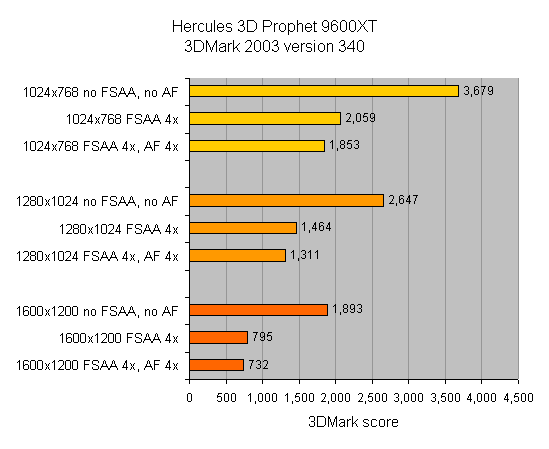
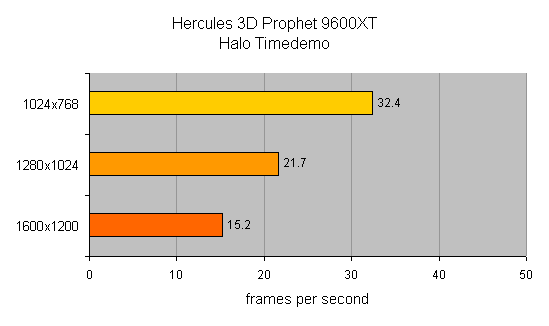
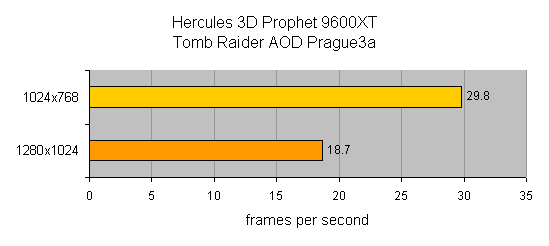
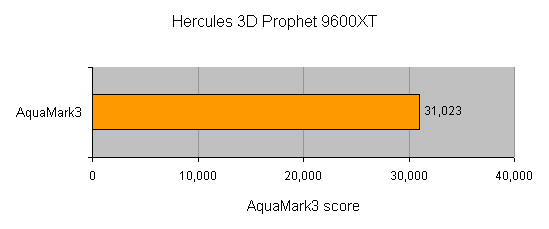
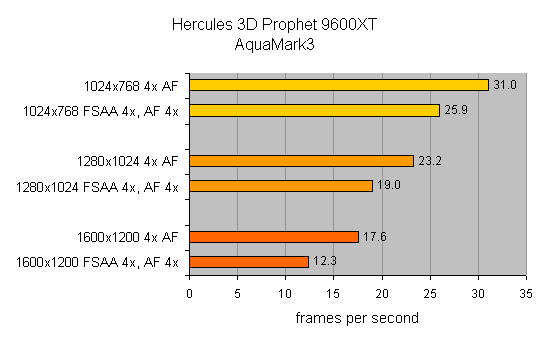
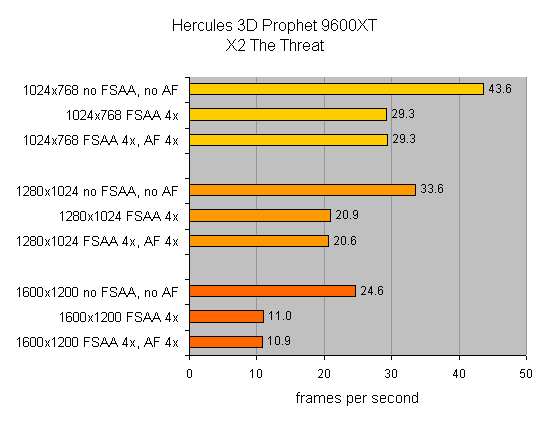
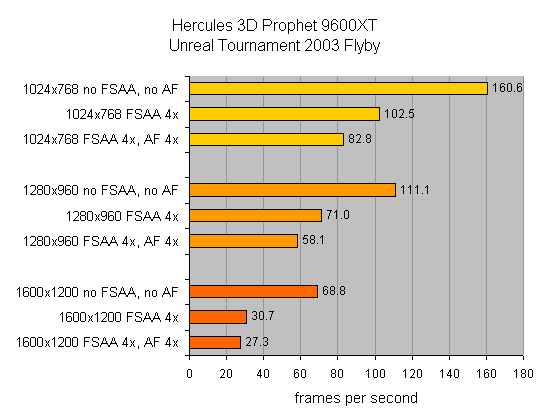
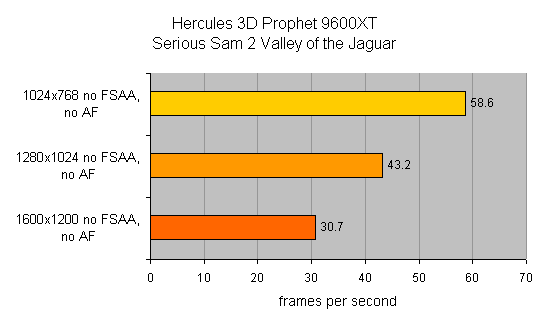
Trusted Score
Score in detail
-
Value 8
-
Features 8
-
Performance 8

